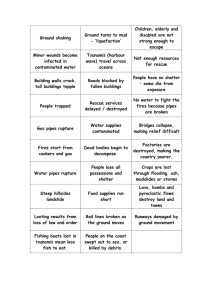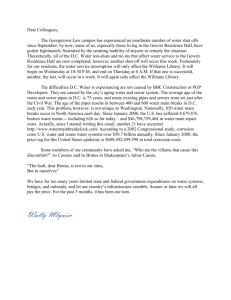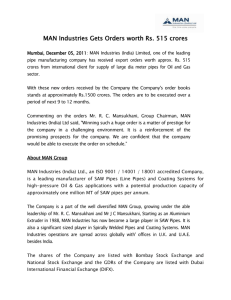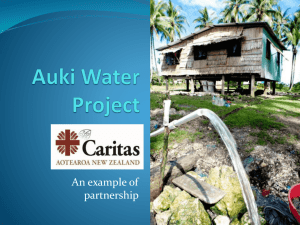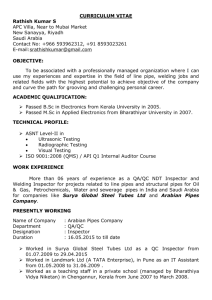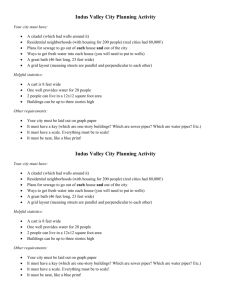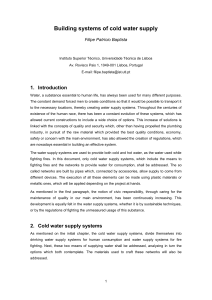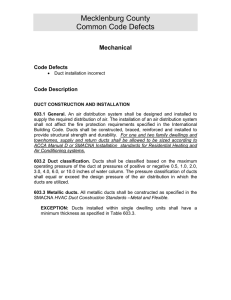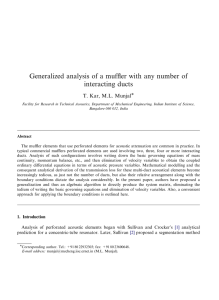VHA PROGRAM GUIDE PG-18-3 Sept. 2010 TOPIC 7. PIPING AND DUCTS
advertisement
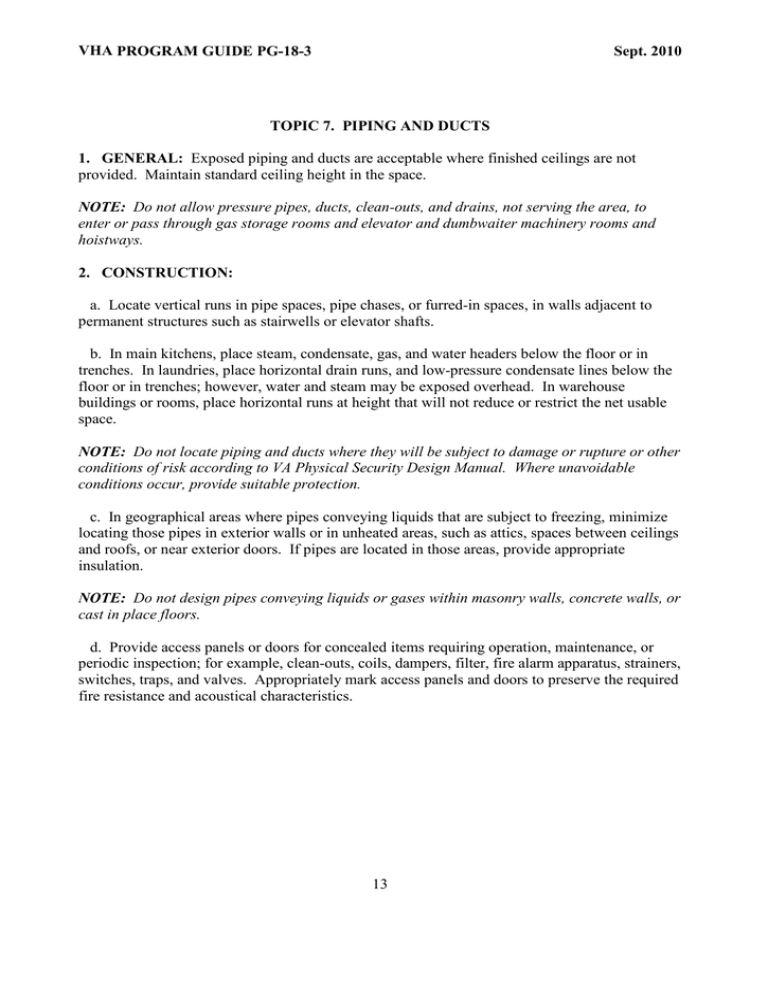
VHA PROGRAM GUIDE PG-18-3 Sept. 2010 TOPIC 7. PIPING AND DUCTS 1. GENERAL: Exposed piping and ducts are acceptable where finished ceilings are not provided. Maintain standard ceiling height in the space. NOTE: Do not allow pressure pipes, ducts, clean-outs, and drains, not serving the area, to enter or pass through gas storage rooms and elevator and dumbwaiter machinery rooms and hoistways. 2. CONSTRUCTION: a. Locate vertical runs in pipe spaces, pipe chases, or furred-in spaces, in walls adjacent to permanent structures such as stairwells or elevator shafts. b. In main kitchens, place steam, condensate, gas, and water headers below the floor or in trenches. In laundries, place horizontal drain runs, and low-pressure condensate lines below the floor or in trenches; however, water and steam may be exposed overhead. In warehouse buildings or rooms, place horizontal runs at height that will not reduce or restrict the net usable space. NOTE: Do not locate piping and ducts where they will be subject to damage or rupture or other conditions of risk according to VA Physical Security Design Manual. Where unavoidable conditions occur, provide suitable protection. c. In geographical areas where pipes conveying liquids that are subject to freezing, minimize locating those pipes in exterior walls or in unheated areas, such as attics, spaces between ceilings and roofs, or near exterior doors. If pipes are located in those areas, provide appropriate insulation. NOTE: Do not design pipes conveying liquids or gases within masonry walls, concrete walls, or cast in place floors. d. Provide access panels or doors for concealed items requiring operation, maintenance, or periodic inspection; for example, clean-outs, coils, dampers, filter, fire alarm apparatus, strainers, switches, traps, and valves. Appropriately mark access panels and doors to preserve the required fire resistance and acoustical characteristics. 13
